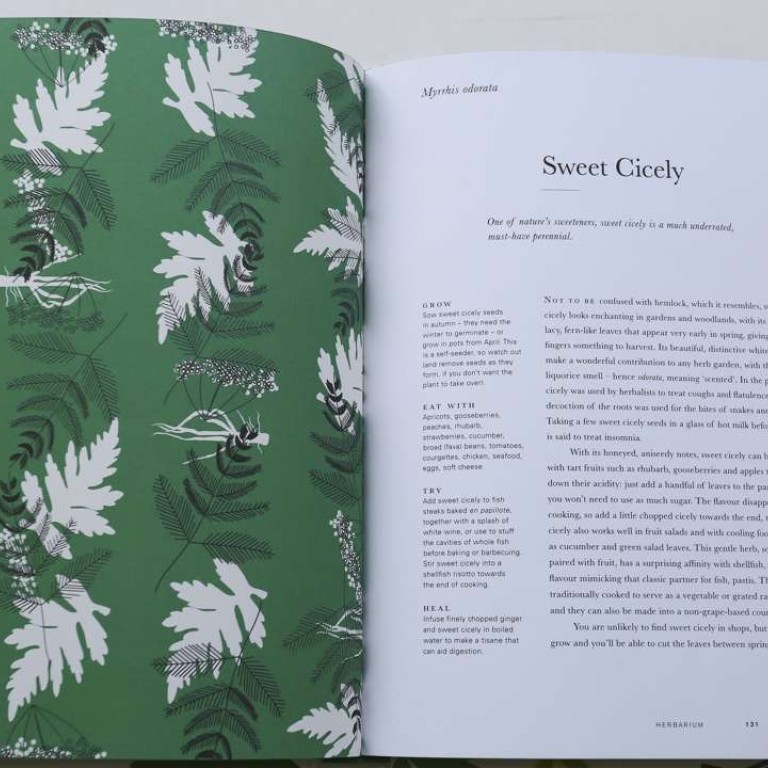
Herbarium – this book has everything you need to know about herbs
Caz Hildebrand’s latest book is filled with fantastic illustrations and information – from relief of 'inappropriate or excessive sexual urges' to flatulence – about nature’s medicine cabinet

In the introduction, Hildebrand writes, “We’re missing out on herbs if we don’t appreciate their multidimensional personalities; their varying medicinal, culinary, spiritual, cultural and magical qualities and histories. They are fascinating, each with their own stories to tell; I’ve very much wanted to listen to each herb, to let it speak for itself. Where flowers bring beauty to the garden, herbs bring that but also usefulness, morality, wisdom.

“What is a herb? Definitions vary, of course, but the simplest could go something like this: herbs are plants that are useful to humans for flavouring, food, medicine or perfume. It is helpful, perhaps, to distinguish herbs from spices: we might think of the herb as the fresh, leafier part of a plant, whereas the spice is the dried seed, berry or root – although that is by no means a rule [...] In many cases, herbs are simply weeds in the right place at the right time.”
So, why illustrations instead of photos? “This volume comes in a long tradition of books that combine words and illustrations to illuminate the beauty and the uses of the herbaceous plants. Herbals – from the medieval Latin liber herbalis, meaning ‘book of herbs’ – were some of the first books produced in ancient civilizations and contained the latest and best medical knowledge available to herbalists and apothecaries. In Europe, herbals flourished for 200 years after the introduction of moveable type at the end of the 15th century [...]

“In this book, the ambition from the start was to illustrate the herbs in such a way as to form a set of elements that created beautiful patterns. The way we have designed the herbs echoes the history of herbal illustrations, but with the intention of taking it forward, achieved by using a contemporary style, inspired by Modernist design, simple, geometric forms and vibrant colours.”
The herbs are listed alphabetically in the order of their botanical name. The information on each herb includes (most of the time) tips on how to grow it and its culinary and medicinal uses. We find, for instance, that woodruff tea helps “to sooth stomach aches and migraines, and combat insomnia”; that if you have flatulence you should try chewing on lovage seeds; and that rau ram (also known as laksa leaf) can help with “inappropriate or excessive sexual urges”.

